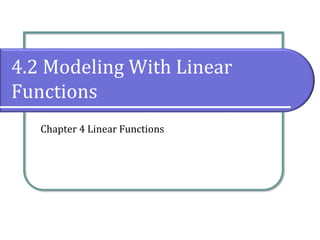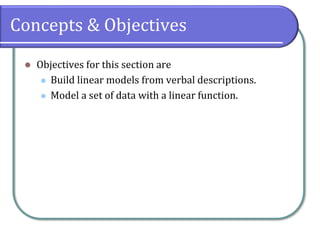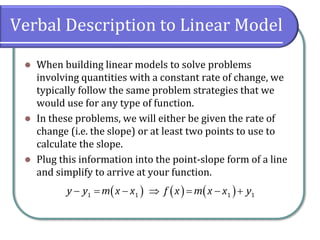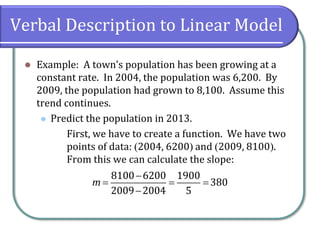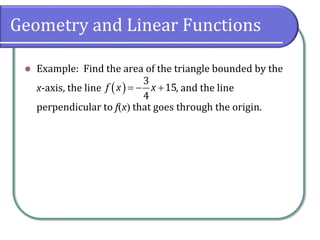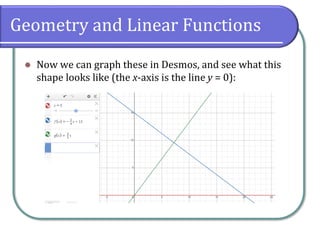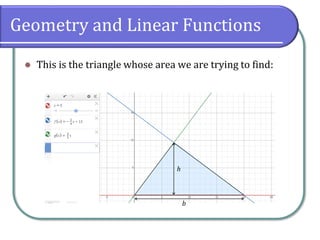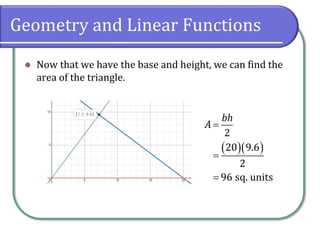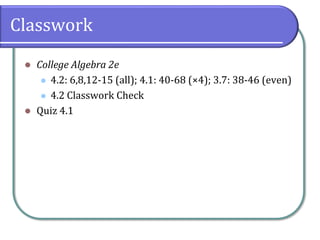This document discusses modeling linear functions from verbal descriptions and data. It provides examples of writing linear functions from population data over time and comparing costs from two linear rental fee structures. It also discusses using systems of linear equations and graphing to find break-even points between two linear models. The document emphasizes setting up linear functions from real world contexts and using properties of lines to solve problems.
